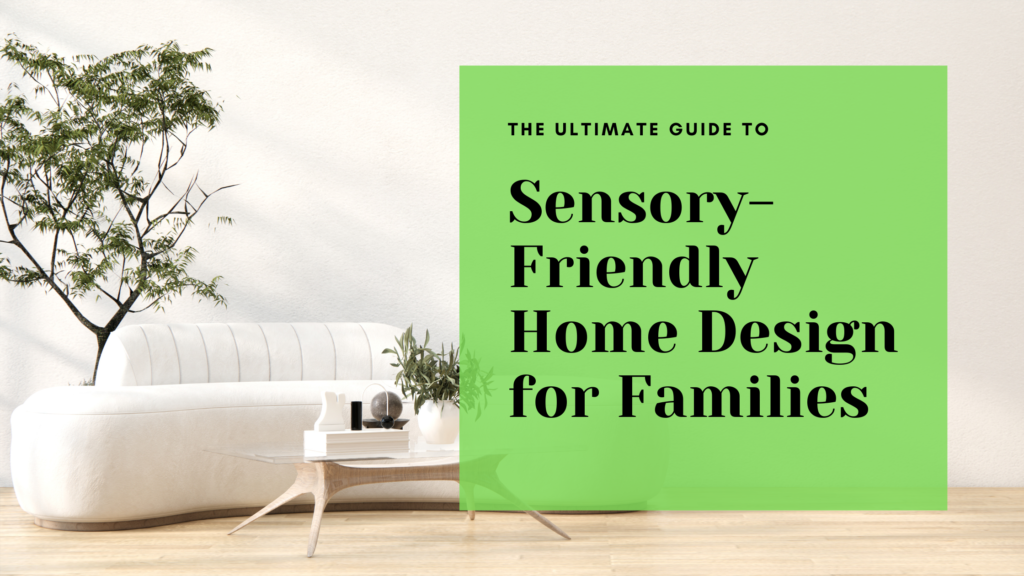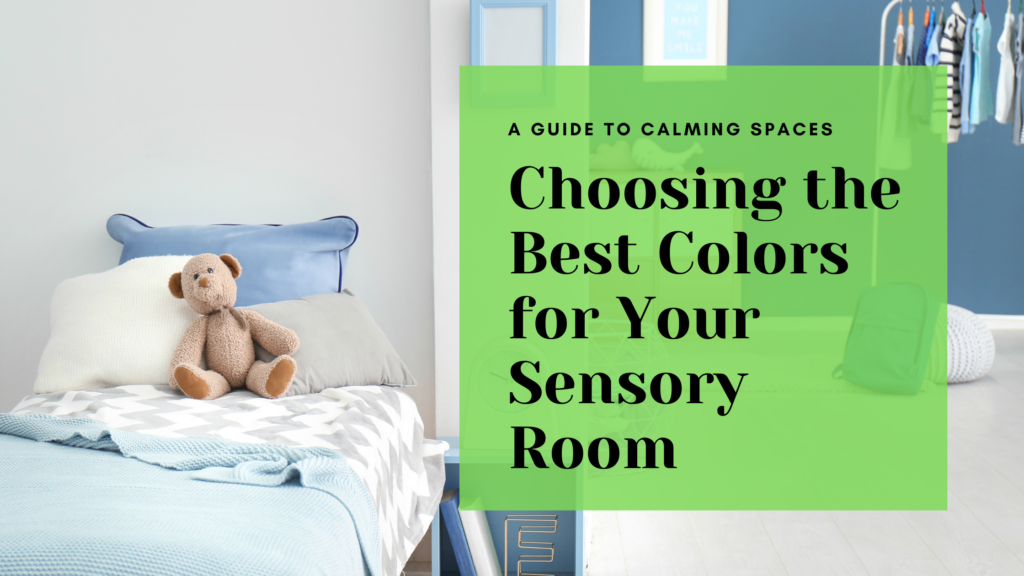I. Introduction
The Importance of Sensory Rooms for Toddlers
Sensory rooms play a crucial role in early childhood development, especially for toddlers with sensory processing challenges or autism. These rooms are specially designed to help children explore their senses in a controlled, safe environment. For toddlers, sensory rooms can enhance cognitive development, improve motor skills, and provide a space where they can explore different textures, sounds, and sights in a way that feels secure and comforting.
Creating a sensory room at home has many benefits. It offers a dedicated space where toddlers can engage in sensory activities that support their development. These rooms can help reduce anxiety, encourage calmness, and provide a safe retreat from overwhelming environments. With a well-designed sensory room, toddlers can develop important skills while feeling secure and supported.
Purpose of the Guide
This guide is designed to help parents and caregivers create a sensory room tailored specifically to the needs of toddlers. It will walk you through the key elements of designing a safe and stimulating environment that promotes sensory exploration while ensuring that the space is age-appropriate and secure. The guide emphasizes the importance of safety and creating a space that meets the unique sensory needs of toddlers.
II. Understanding Sensory Needs in Toddlers
Key Sensory Developmental Stages
Understanding the stages of sensory development in toddlers is essential when designing a sensory room. During these early years, toddlers are exploring the world through their senses—touch, sight, sound, smell, and taste. This exploration is crucial for their cognitive and motor development. However, toddlers with sensory processing challenges might react differently to sensory input. Some may be overly sensitive to certain stimuli, while others may seek out sensory experiences more intensely.
Recognizing these developmental stages helps in creating a sensory room that supports and enhances their growth. For example, during the early stages, a toddler might benefit from soft, calming textures and gentle sounds. As they grow, more interactive and stimulating elements can be introduced to keep up with their developing senses.
Identifying Your Toddler’s Specific Sensory Preferences
Every toddler is unique, and so are their sensory preferences. To create an effective sensory room, it’s important to observe your child and identify what they are drawn to and what they might find overwhelming. Does your toddler enjoy bright colors, or do they prefer softer tones? Are they comforted by gentle music, or do they like more interactive, tactile play?
By understanding your toddler’s specific sensory preferences, you can tailor the sensory room to meet their needs. This personalized approach ensures that the room is both engaging and comforting, providing the right balance of stimulation and relaxation.
III. Essential Elements of a Toddler Sensory Room
Safe and Calming Colors
- Choosing Appropriate Colors: The colors in a sensory room can significantly impact a toddler’s mood and behavior. Calming colors like soft blues, greens, and neutral tones are ideal for creating a soothing environment. These colors help reduce anxiety and create a peaceful atmosphere where toddlers can feel secure. It’s important to avoid overly bright or contrasting colors that might overstimulate or overwhelm young children.
- Avoiding Overstimulation: While some bright colors can be engaging, it’s essential to balance them with softer, neutral tones to avoid sensory overload. For example, you might use a soft pastel color for the walls and add a few colorful, engaging toys to capture attention without overwhelming the senses.
Soft, Comfortable Flooring
- Choosing Safe Flooring Materials: Flooring is an important consideration in a sensory room, as toddlers spend a lot of time on the floor playing and exploring. Soft, non-slip, and cushioned flooring materials are ideal. Options like foam tiles, plush carpets, or padded mats provide a safe and comfortable surface for your toddler to crawl, walk, and play on. These materials also reduce the risk of injury from falls, making the room a safer space for exploration.
- Incorporating Tactile Surfaces: Adding tactile elements to the floor can enhance the sensory experience. Consider incorporating textured mats, foam tiles with different patterns, or sensory paths that encourage toddlers to explore with their hands and feet. These surfaces provide varied sensory input, which is important for tactile development.
Age-Appropriate Sensory Equipment
- Tactile and Interactive Toys: Selecting the right toys is key to creating a sensory room that stimulates and engages toddlers. Tactile toys like textured balls, soft blocks, and sensory bins filled with safe materials (like rice or sand) can offer hands-on exploration. These toys help develop fine motor skills and encourage sensory play, which is crucial for early development.
- Visual and Auditory Stimulation: Gentle visual stimuli, such as bubble tubes and soft lights, can captivate a toddler’s attention without overwhelming them. These tools create a calming atmosphere and can be paired with soothing auditory elements like white noise machines or lullaby music. Together, these elements help create a multi-sensory environment that promotes relaxation and sensory exploration.
Safe and Cozy Seating
- Selecting Toddler-Friendly Seating: Comfortable seating is a must in any sensory room. Options like bean bags, plush chairs, and padded corners provide a cozy spot where toddlers can rest or take a sensory break. These seating options should be soft and supportive, allowing the child to feel secure while they relax.
- Creating a Quiet Space for Relaxation: It’s important to design a quiet, calming area within the sensory room where toddlers can retreat if they feel overwhelmed. This area might include soft lighting, comfortable seating, and soothing sounds. Creating this space helps toddlers learn to self-regulate and take breaks when needed.
Interactive Play Areas
- Designing Play Zones: A well-designed sensory room should have specific areas dedicated to different types of sensory play. For example, you can create a tactile play corner with various textures and materials, a visual stimulation zone with lights and colors, and a movement area with equipment like soft rockers or trampolines. These play zones allow toddlers to explore different senses in a structured way, enhancing their sensory experiences.
- Incorporating Movement and Balance Equipment: Movement is an essential part of sensory development. Including safe movement equipment, like soft rockers, small trampolines with safety handles, or balance boards, encourages physical activity and helps develop motor skills. These tools also provide vestibular input, which is important for balance and coordination.
IV. Step-by-Step Guide to Setting Up the Sensory Room
Step 1: Planning the Space
Start by planning the layout of your sensory room. Consider how much space you have and how you can allocate different areas for various activities. It’s important to ensure that the room is safe, with enough space for your toddler to move around freely. Think about where to place calming elements like soft seating and where to set up more active areas for movement and play.
Step 2: Gathering Supplies and Equipment
Next, gather the supplies and equipment you’ll need for your sensory room. Focus on finding affordable options that are also safe and durable. Look for items like foam mats, sensory toys, soft seating, and lighting options that fit within your budget. Remember, you don’t need to buy everything at once; start with the essentials and add more as needed.
Step 3: Assembling and Arranging the Room
Once you have all your supplies, it’s time to set up the room. Start by assembling any equipment and arranging the space according to your plan. Make sure that all elements are securely installed and that the room is free of hazards. Arrange the toys and equipment in a way that encourages exploration and makes it easy for your toddler to move from one activity to another.
Step 4: Personalizing the Space
Finally, add personal touches to the room to make it more inviting for your toddler. This could include incorporating their favorite colors, characters, or themes into the decor. Personalization makes the space feel special and helps your toddler feel more comfortable and engaged.
V. Tips for Maintaining a Safe and Engaging Environment
Ensuring Ongoing Safety
Safety should always be a priority in a sensory room. Regularly check the room to make sure it remains safe for your toddler. This includes inspecting equipment for wear and tear, ensuring that toys are clean and in good condition, and organizing the space to prevent clutter. Keeping the room safe ensures that your toddler can explore and play without risk.
Adapting the Room as Your Toddler Grows
As your toddler grows, their sensory needs will change. It’s important to adapt the sensory room to keep up with their development. This might mean adding new toys and equipment, adjusting the layout, or introducing more complex sensory activities. Regularly updating the room ensures that it continues to be a stimulating and supportive environment.
Encouraging Exploration and Learning
Encourage your toddler to explore the sensory room and engage with the different activities. Make the space inviting and fun, so your child feels excited to spend time there. Sensory play is a valuable tool for learning, so by encouraging exploration, you’re also fostering your child’s cognitive and motor development.
VI. Conclusion
Recap of Key Elements
A well-designed sensory room for toddlers is a safe, engaging space that supports sensory development. Key elements include calming colors, soft flooring, age-appropriate sensory toys, cozy seating, and interactive play areas. By focusing on safety and personalization, you can create a room that meets your toddler’s unique sensory needs.
Encouragement to Create Your Own Sensory Room
If you’re thinking about creating a sensory room for your toddler, now is the perfect time to start. Even small steps can make a big difference in your child’s development. A sensory room offers a dedicated space where your toddler can explore, learn, and grow in a safe and supportive environment.
We encourage you to share your sensory room projects, seek out additional resources, and consult with professionals if needed. Designing a sensory room is a rewarding project, and there are many ways to make it work for your child’s unique needs. Explore, create, and enjoy the process of building a space that will benefit your toddler’s growth and well-being.


